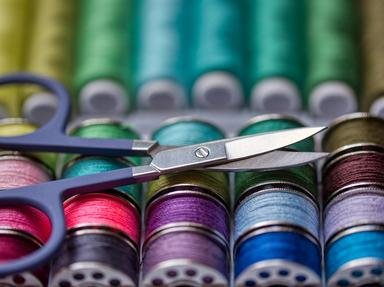Quiz Answer Key and Fun Facts
1. Buttonhole stitch, cutting ground threads, and filling stitches are all used in this type of needlework which was traditionally worked with white threads on white cloth.
2. This type of needlework requires the use of wool threads. It is often confused with another type of needlework that uses cotton threads.
3. This type of needlework, which uses white or off-white threads on a similarly colored ground fabric, traditionally consists solely of Colonial knots and stem stitches.
4. A double running stitch is used in this type of needlework to create a reversible design. Repeated geometric patterns are used to fill areas of the design.
5. This type of needlework, whose name is often mistakenly used to identify all types of needlecraft, is stitched on canvas with cotton or wool threads.
6. Stretching the fabric, rather than cutting threads, produces the lacy effect of this type of needlework.
7. Wires, padding, and layers of felt produce the three-dimensional effects in this needlework.
8. Often a needle worker's first experience, this type uses full, half, and three-quarter Xs.
9. Traditionally worked on canvas, the stitches in this type are often shaped like flames.
10. This needlework is also called "voided work" because the background is stitched while the main design is created from the void (the unstitched area).
Source: Author
ms_e
This quiz was reviewed by FunTrivia editor
Bruyere before going online.
Any errors found in FunTrivia content are routinely corrected through our feedback system.

